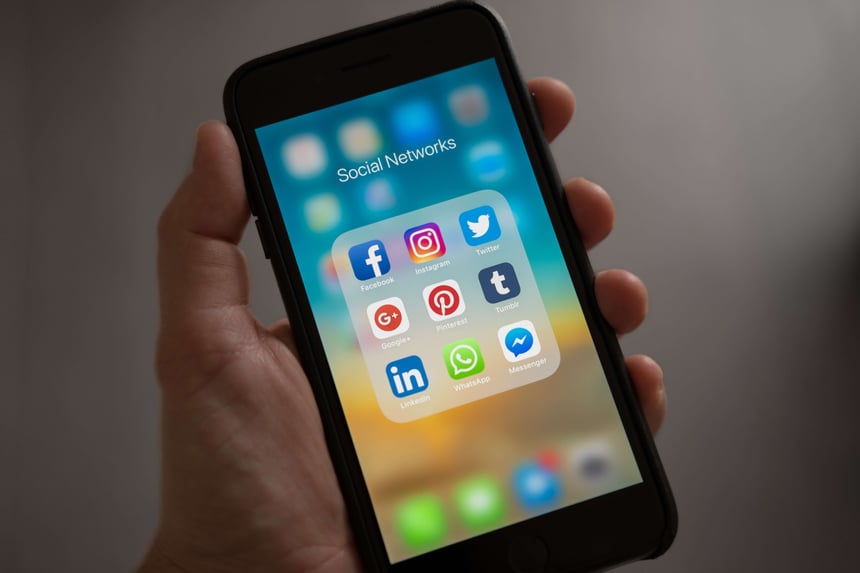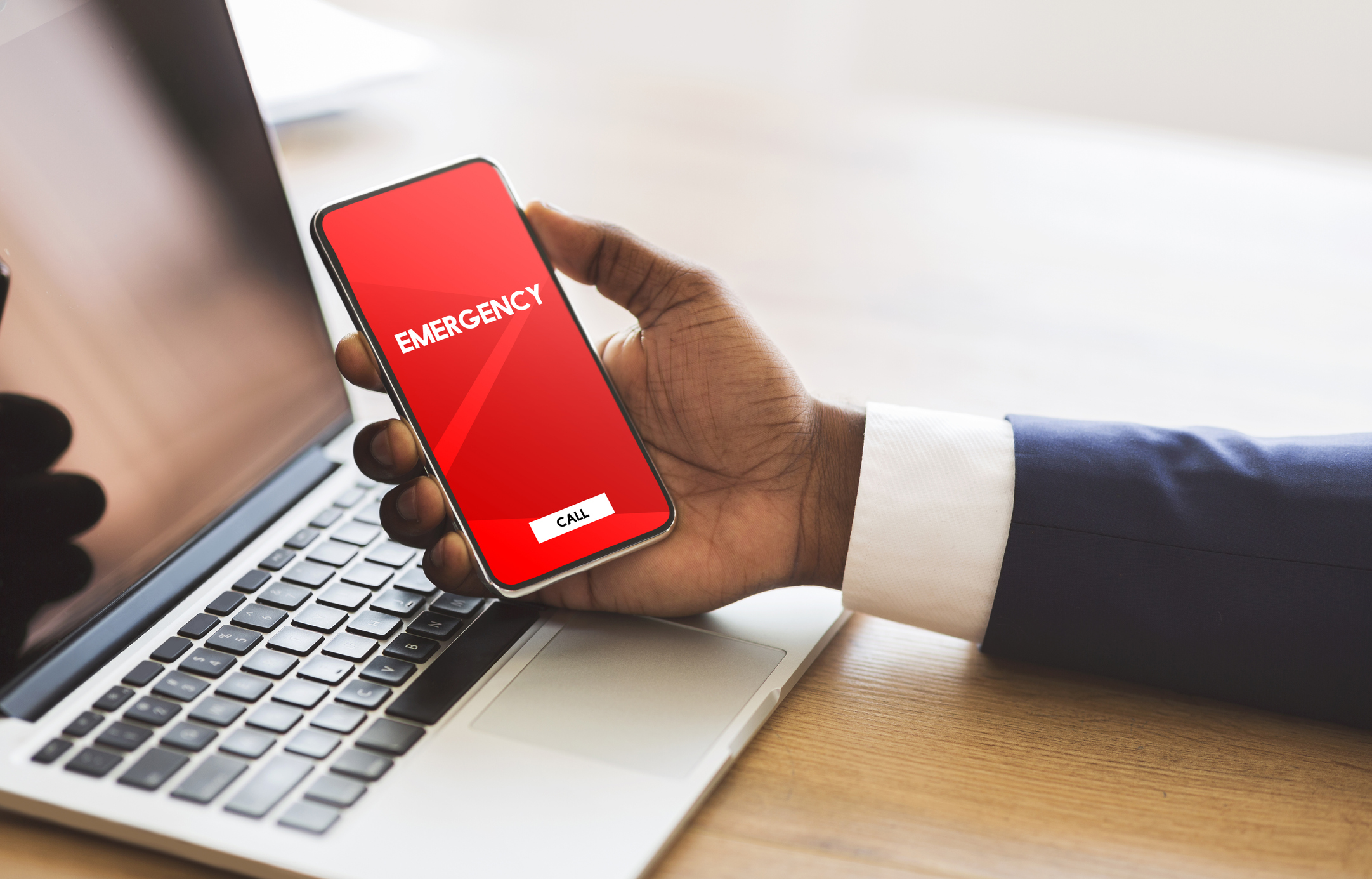Instant Messaging vs Texting: Uses & Major Differences

WhatsApp. Facebook Messenger. Instagram DMs. Traditional texting. These are a few of the countless text-based platforms that enable people to connect, collaborate and converse in the digital age.
And in a time when a person may be juggling texts, Slack messages and LinkedIn direct messages simultaneously—all through the same device—it’s understandable why terms like "instant messaging" and "texting" are often used interchangeably.
While they share similarities, it’s essential to note that these two modes of transmission aren’t synonyms. They’re distinct forms of communication with their own unique uses and differences.
More than semantics, it’s about empowering you to pick the right communication tool for the right task. This guide on instant messaging vs. texting will help your business navigate these popular digital messaging channels.
- Understanding instant messaging
- Exploring texting
- Instant messaging vs. texting: common use cases
- Compliance issues with messaging
Understanding Instant Messaging
Instant messaging (IM) is online, text-based, real-time communication between at least two people on an app or platform. Historically, IM was limited to the real-time exchange of text messages over the internet. However, it has evolved over the years to integrate other types of data, including:
- Videos
- Images
- Audio files
- Documents
- Multimedia files
We can trace back the roots of instant messaging apps to 1997 with AOL Instant Messenger (AIM). AIM became an overnight sensation—particularly among teenagers and young adults—providing a platform where users could effortlessly connect with friends, family, and colleagues, regardless of geographical distances.
It introduced innovative features that have since become integral to today's IM platforms, including:
- Buddy list allowed users to see which friends were online and available to chat.
- Away messages acted as digital status updates, allowing users to communicate their availability.
- AIM screen names served as unique (and often kitschy) online identities that often reflected the person’s tastes and passions.
- Buddy icons enabled users to express their personality or mood via customizable avatars. They laid the groundwork for the modern profile picture.
Even though AIM was retired in 2017, it acted as the vanguard of IM. You can still see its influence in the DNA of modern instant messaging platforms like WhatsApp, Facebook Messenger and Slack.
Features and Benefits of Instant Messaging
As mentioned, modern IM’s capabilities extend beyond real-time text exchange. Today, there are dozens of features designed to facilitate seamless communication, whether you’re connecting with potential customers or collaborating with remote teams. Common features include:
- Multimedia sharing – Share more than just messages, including photos, videos, audio files, documents, and more. The ability to rapidly send any file type enriches the conversational aspect of instant messaging.
- Group chats – Enables multiple users to engage in a single conversation thread.
- End-to-end encrypted communication – Many IM platforms provide end-to-end encryption to ensure that conversations remain private between the sender and the recipient.
- Voice and video call – In recent years, many IM platforms have integrated voice and video call functionalities, which are especially useful for remote teams or virtual catch-ups.
- Read receipts and typing indicators – These helpful features inform users whether a message has been read and when a person is replying, which helps foster the sense of real-time conversation.
- Status updates and presence indicators – These helpful features provide visibility over a person’s availability. Common indicators include online, busy or away.
- Integration with other services – Most IM platforms are designed to integrate with other digital tools, applications or devices to streamline workflows and provide access without leaving the platform.
- Data backup – IM platforms often allow users to automatically back up or download their messaging data.
- More lax character limitations – Most IM platforms allow users to craft messages that are significantly longer in character length compared to traditional texts.
Popular Instant Messaging Platforms
Today, dozens of instant messaging platforms compete to command user attention. Of those, here are four of the more popular channels:
- Slack – Favored by businesses, Slack is the most popular messaging platform for remote working teams, offering direct messages, group chats and the ability to organize conversations into different channels.
- WhatsApp – Now owned by Facebook, WhatsApp offers a comprehensive messaging platform that includes both text and instant messaging, voice and video calls, group chats, and file sharing.
- Facebook Messenger – Integrates with the social network while offering many of the same features as WhatsApp.
- Snapchat – Snapchat is another popular instant messaging platform, especially among younger demos. While it originally started as a platform for sending photos and videos that disappear after being viewed (known as “snaps”), it has since evolved to include various instant messaging services.
Exploring Texting
Long before the advent of instant messaging, there was texting—a straightforward, no-frills means of communication using cell phones. Texting utilizes cellular networks, meaning there’s no need for an internet connection for texts to go through.
Texting’s first iteration was officially known as SMS, which stands for Short Message Service. It quickly became the backbone of rapid, mobile-based communication.
In its original design, the service permitted mobile devices to exchange brief text messages, capping each at 160 characters. This constraint gave birth to the abbreviations and acronyms of text-speak culture like LOL, BRB and TTYL.
But texting eventually integrated more advanced MMS (Multimedia Messaging Service), which enabled mobile devices to send images, videos and audio.
Read SMS vs. MMS Messaging: Which One is Right For Your Business?
Features and Benefits of Texting
Texting, although similar to IM, also has inherent advantages. It may not have as many bells and whistles, but its strength lies in its simplicity, reliability and ubiquity.
- Universality – Texts can be sent to any mobile device—from the most rudimentary flip phone to the newest iPhone. And practically every adult in America (97% of the population) has a cell phone. So, even if a contact doesn’t have the newest device or hasn’t downloaded a specific messaging app, they can likely still be reached via SMS messaging.
- No internet connection needed – Texting doesn’t rely on internet service. You only need a cell signal to send or receive texts, making it more reliable, particularly in remote areas that lack internet coverage.
- Asynchronous communication – Texting walks the middle ground between email and IM. Messages can be sent and opened immediately, or they may wait in the person’s message box until they open it up. This makes it a less intrusive form of messaging.
- Direct and personal – Text messages go directly to the recipient's inbox. Texts aren’t lost in the clutter of social media feeds or alert systems. And, with 97% of messages being read within 15 minutes of delivery, it’s little wonder why SMS marketing has become so popular.
- Emergency notifications and alerts – Because texting is the most direct way to get someone’s attention and doesn’t rely on the internet, many regions, government, and public safety agencies rely on SMS to deliver emergency alerts like an Amber alert or a flash flood warning.
Instant Messaging vs. Texting: Common Use Cases
Instant Messaging |
Texting |
|
Real-time communication |
Reach and accessibility |
|
Group chats and collaboration |
Compatibility across different devices |
|
File sharing and multimedia support |
Emergency notifications and alerts |
Compliance Issues with Messaging
Whether your business opts to prioritize texting, IM or some combination of both, you must abide by the various regulations designed to protect user data and privacy.
For text messaging, such regulations are specific to telecommunication regulations. But for IM, there exist several key compliance regulations that you must consider, including:
- GDPR (General Data Protection Regulation) – Relevant for those dealing with EU citizens' data, GDPR was designed to protect the user’s personal data, providing them with greater control over their information and how companies use it.
- HIPAA (Health Insurance Portability and Accountability Act) – In healthcare, every message containing patient data must align with HIPAA.
- FINRA (Financial Industry Regulatory Authority) Regulations – For financial institutions, every digital communication must be recordable and auditable.
IM vs. Texting—Choose the Right Method with Texting Base
IM and text messaging are both effective means of communication—be it personal or business-related. The right choice of which one to use will depend on your specific needs and industry compliance requirements.
For flexible, functional, multimedia-rich communication, there’s IM. But for simple, universal and immediate reach, there’s texting.
At Texting Base, our platform empowers your text message marketing efforts on a mass scale. We ensure you're connected on every front with advanced texting features like drip campaigns, upload lists, automatic text replies, and integrations with over 4,000 other apps.
Want to open the door to a broader audience? With Texting Base, you can make every text count.

.jpg)
